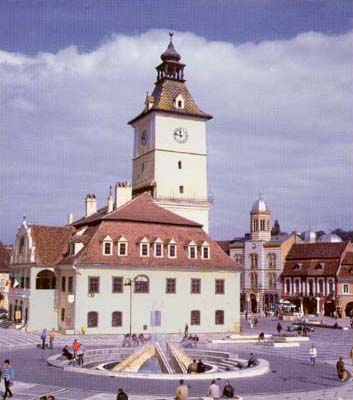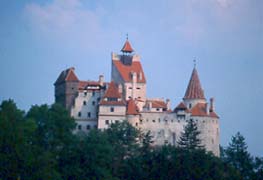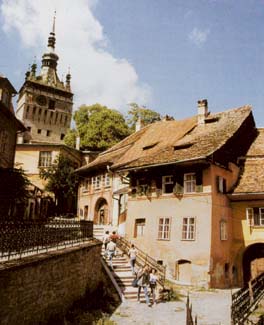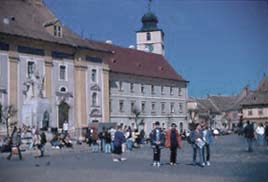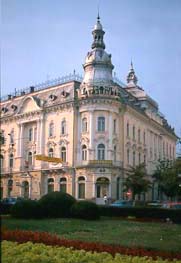Transylvania lies in the center of Romania, surrounded by the arc of the Carpathian mountain chain. Brasov, its largest city, sits at the foothills, beside Postavaru Mountain. In the middle ages, Brasov was a rich Saxon trade city. The original town square and its surrounding areas still bustle with merchants, cafes and entertainments.
The buildings are a colorful collage of ornate Germanic designs and detailing. Highlights include the Black Church, the Council House and Piata Sfatului, the Schei district. A short bus ride from the center of town will take you to Bran Castle or to the Poiana Brasov ski resort. Brasov is also the country's main railroad crossroads; it's just a three-hour ride north from Bucharest.
An hour and a half ride from Brasov will take you to Sighisoara, considered to be the best-preserved medieval city in Europe. It's walls and bastions encircle 16th-century houses and churches along cobble-stoned streets - including the birthplace of the real Dracula, Prince Vlad Tepes. The citadel's clock tower holds the most prominent spot; from its lookout you can see for miles. The tower also houses a small historical museum and the clock's mechanical figurines that count our the hours.
Farther west is the beautiful city of Sibiu. Founded in the 12th century by the Saxons, its streets are lined with colorful buildings with gingerbread trim. Some of Sibiu's attractions include Romania's oldest art museum, the Bruckenthal Museum, established in 1817 on the main square, Piata Mare; also the 15th-century gothic Old City Hall, the Council Tower, and medieval churches. Winding street reveal more small squares and deep ancient stairways lead to the lower town. This was another walled city whose bastions and wall can be seen along the stretch of park just east of the main piata.
Just outside of town is the Museum of Traditional Folk Civilization, 200 acres of original dwellings from the entire country.
Cluj-Napoca is a lively university city of 300,000 in northwestern Transylvania. Also established by the Saxons in the 13th century, Cluj is the main economic center of Transylvania, with strong traditions of culture, research and education.
